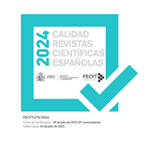Hiérarchie des relations sémantiques interprédicationnelles et appropriation en français L2
Resumen
Le développement de la jonction interpropositionnelle en français L2 constitue un objet de recherche important en linguistique acquisitionnelle. De nombreuses études se sont centrées sur le développement de structures complexes spécifiques, souvent sur la base du rapport sémantique entre les événements qu’elles expriment. Il s’agit entre autres des complétives (Diessel & Tomasello 2001), des interrogatives indirectes (Eckman et al. 1989), des temporelles (Noyau & Vasseur 1986, Degand & Hadermann 2009) ou des causales (Benazzo 2004). Notre contribution examine l’émergence des différentes relations sémantiques entre événements ou états, exprimables au moyen de la jonction interpropositionnelle et interprédicationnelle. Nous voulons montrer comment le répertoire de liens sémantiques exprimés évolue dans l’acquisition d’une langue seconde selon l’âge et le niveau de compétence des apprenants. A cette fin, nous analysons des narrations orales semispontanées produites par des élèves de l’enseignement secondaire en Flandre, qui apprennent le français comme langue seconde. Notre hypothèse de recherche sera basée sur la hiérarchie des relations interprédicationnelles sémantiques proposée par la Grammaire du Rôle et de la Référence (Role and Reference Grammar ; Van Valin & LaPolla 1997, Van Valin 2005). Cette contribution se concentrera sur plusieurs questions de recherche liées aussi bien à la nature sémantique des jonctions qu’à leur réalisation syntaxique : les apprenants acquièrent-ils en premier lieu les relations interprédicationnelles sémantiquement fortes, inclues les catégories structurellement complexes et peut-être plus difficiles à conceptualiser ? Les premiers types de liens à être productifs diffèrent-ils selon le niveau syntaxique de la jonction ? La production des apprenants du français L2 est-elle semblable à celle de locuteurs natifs de la même langue ?Descargas
Descarga artículo
Licencia
La revista Círculo de Lingüística Aplicada a la Comunicación, para fomentar el intercambio global del conocimiento, facilita el acceso sin restricciones a sus contenidos desde el momento de su publicación en la presente edición electrónica, y por eso es una revista de acceso abierto. Los originales publicados en esta revista son propiedad de la Universidad Complutense de Madrid y es obligatorio citar su procedencia en cualquier reproducción total o parcial. Todos los contenidos se distribuyen bajo una licencia de uso y distribución Creative Commons Reconocimiento 4.0 (CC BY 4.0). Esta circunstancia ha de hacerse constar expresamente de esta forma cuando sea necesario. Puede consultar la versión informativa y el texto legal de la licencia.











